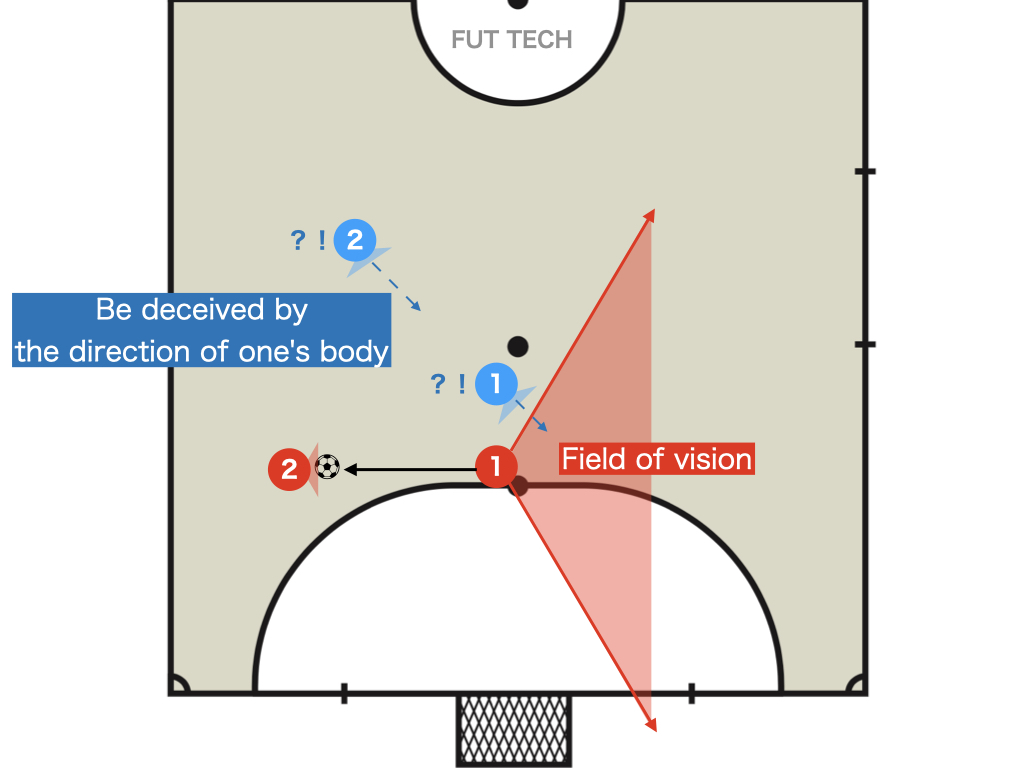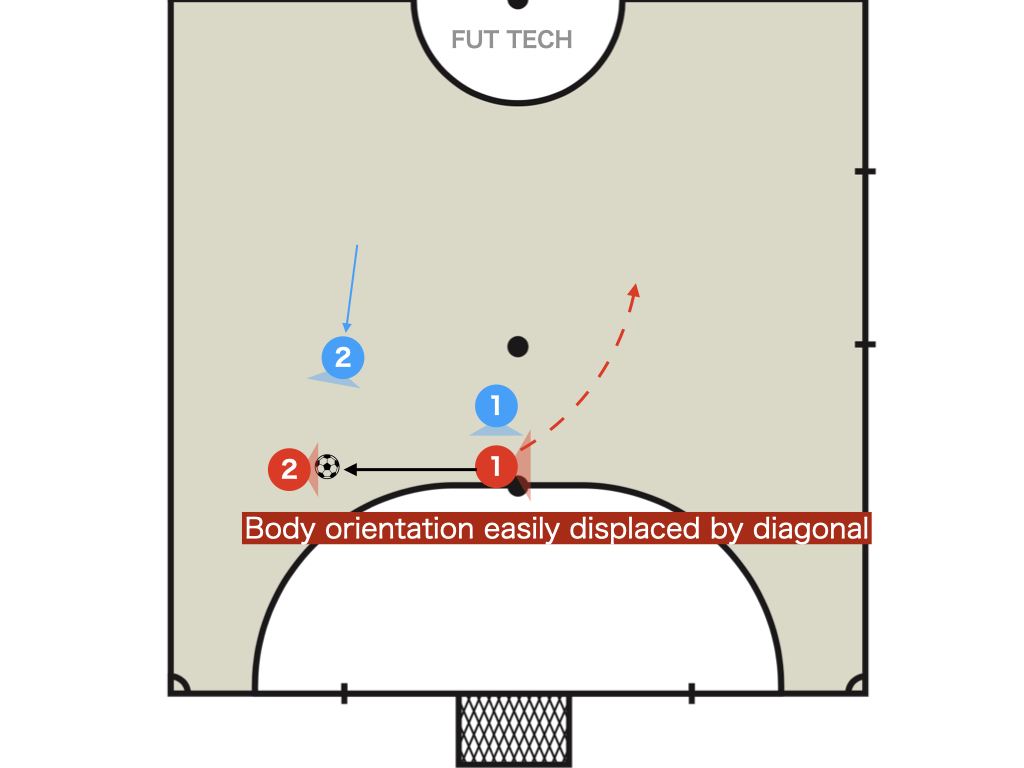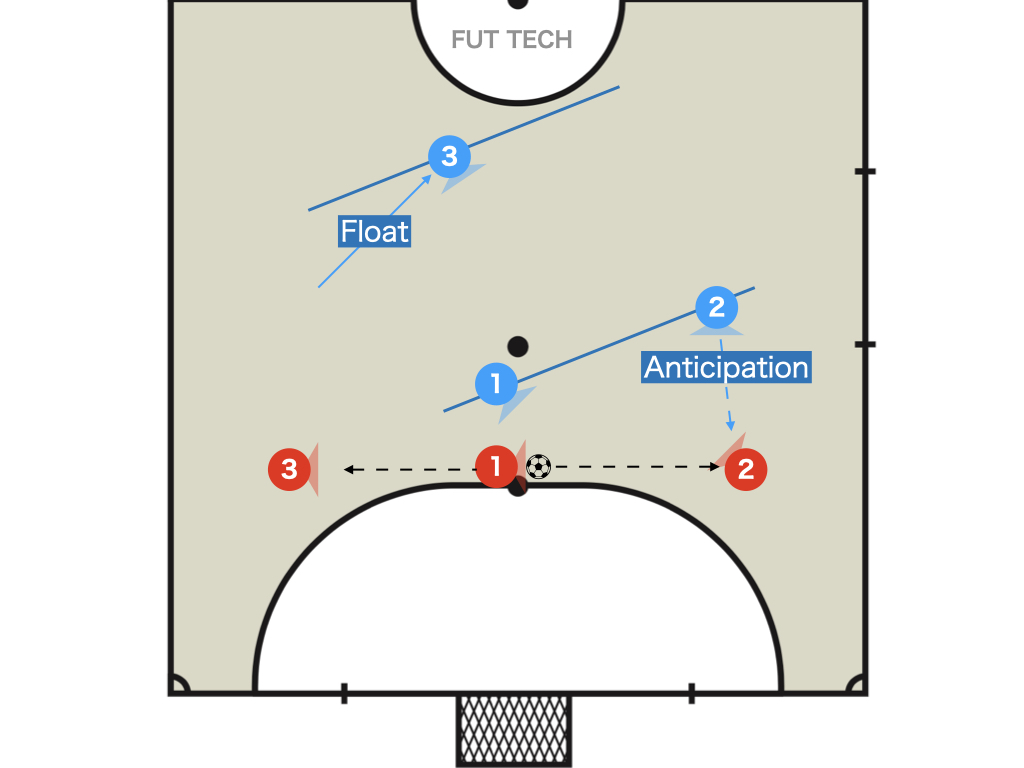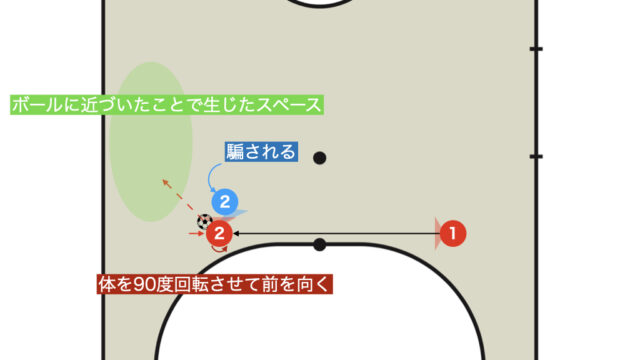Pisada in futsal refers to a heel pass, which is a pass made with the sole of the foot to the area directly behind oneself.
Pisada is an effective tactic in futsal, but in what situations does it prove to be most useful?
This article will explain why pisada is frequently used in futsal.
What is Pisada?

Pisada in futsal is the play where the player with the number 1 in red passes the ball directly behind him with his heel, as shown in the figure above.
Since it’s a pass outside of the player’s field of vision, it’s a high-difficulty move not commonly used in soccer.
However, using pisada allows one to gain an advantage over the opponent, which is why many players frequently utilize it in futsal.
Tactical Effects of Pisada in Futsal

In futsal, using pisada can cause confusion in the opponent’s defense.
The defensive side in futsal predicts the next pass location by observing the body orientation of the ball holder.
However, when the attacking side uses pisada to pass the ball behind, it confuses the defense by passing in the opposite direction of their prediction.

In situations where pisada is utilized in futsal, the ball holder can quickly move out by taking advantage of their body orientation.
This can be cleverly used to break free from their mark through diagonal movement.
Utilizing Pisada to Overcome Multiple DF Lines in Futsal

Pisada proves effective against teams that construct multiple DF lines.
In the illustration above, player number 1 in red, facing left, would normally find it difficult to pass to player number 3 in red. Player number 2 in blue can easily predict the next pass, seemingly giving the defense an advantage.
However, by using pisada for passing to player number 3 in red, the attacking side can suddenly gain an advantage.
Furthermore, if player number 1 in red is aware of player number 3 in blue floating around, it indirectly indicates that player number 3 in red is free, making pisada a viable option.

The defense was prepared to limit the pass to player number 2 in red. Therefore, when an unexpected pass is made due to player number 1’s pisada, it causes confusion over who should cover player number 3 in red.
This hesitation in the defense grants the attacking side time and space.
Thank you very much for reading this article to the end.
If you found this article useful, please consider sharing it using the social media share buttons above.
We regularly share valuable insights on futsal tactics on Twitter, so if you haven’t followed us yet, we’d appreciate your support!
We are committed to raising the level of futsal in Japan by sharing high-quality information through discussions with individuals who have coaching experience in the F.League and overseas.
If you have any questions or notice any mistakes, feel free to leave a comment below.
We update our articles regularly, so if you’d like to keep reading, please bookmark our site or search for “FutTech”!


